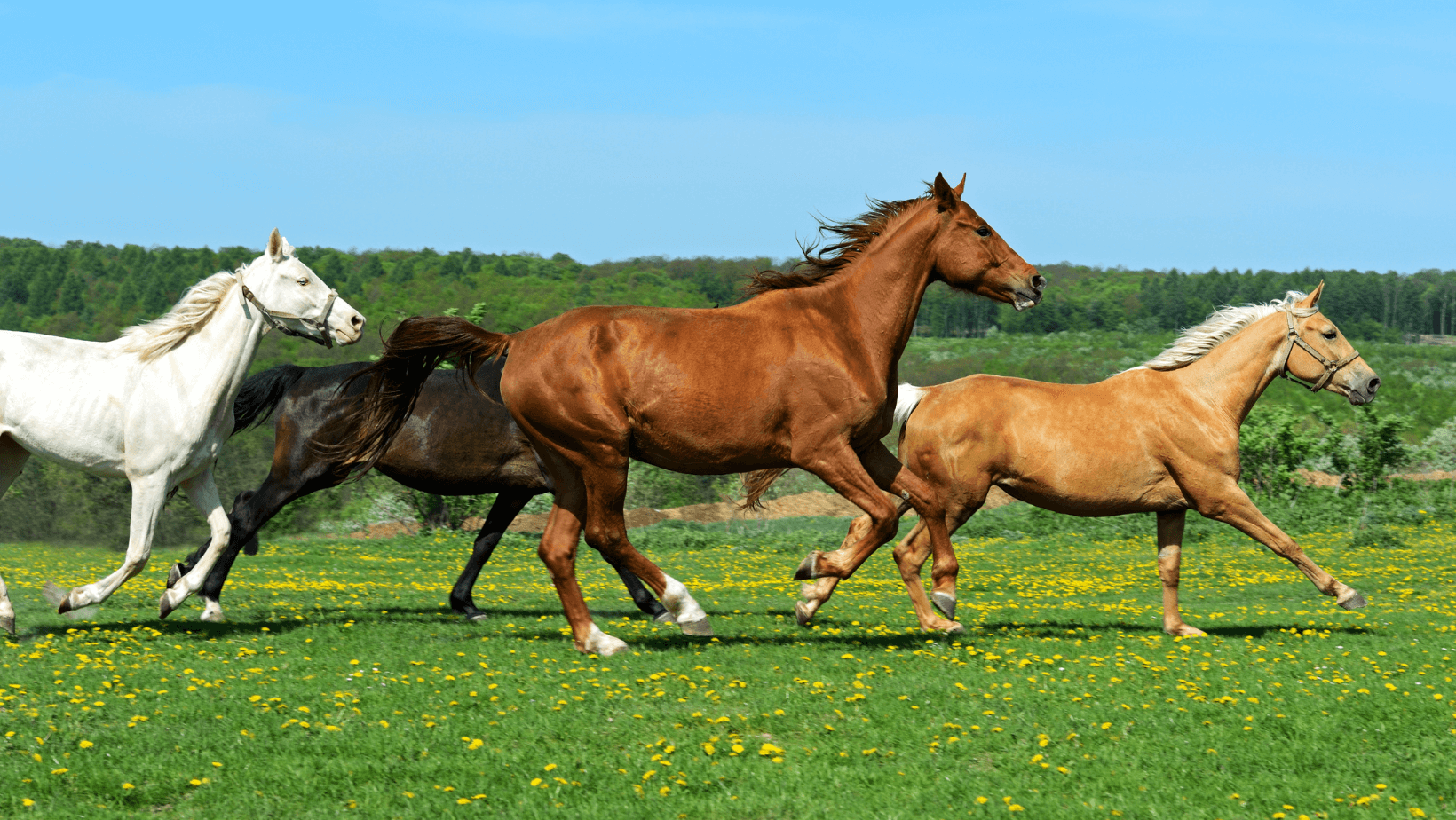
Horse Domestication
It’s believed that the wild horse was initially hunted for food in prehistoric times. But they began taking on many other vital roles in human society when domestication started approximately 6,000 years ago. Research suggests that they were first domesticated by an Indo-European tribe that lived in the Eurasian Steppe, near modern-day Ukraine and West Kazakhstan.
All modern domestic horses belong to a single species, Equus caballus. However, the species itself is diverse. There are over 200 breeds, many of which evolved from intentional breeding practices to optimize the animals for specific purposes. Since their domestication, humans have relied on them for essential tasks like plowing fields, harvesting crops, herding livestock, transportation, and warfare. Widespread mechanization in the 20th century reduced human reliance on horses throughout much of the world, but they are still widely used recreationally for riding and companionship.
Their importance in early civilizations is seen in the various high honors they were shown. For example, they were often buried alongside their masters in the graves of Scythian kings and the tombs of Egyptian pharaohs. Ancient Greek mythology depicted their close relationship to humans through the Centaur, a symbol of the oneness of horse and rider. In fact, throughout much of history, it was all but necessary for kings, generals, and statesmen to be horsemen.

Popular Breeds
One of the oldest recognized breeds in the US is the American Quarter Horse, which originated around the 1660s as a cross between native horses of Spanish origin and English horses imported to Virginia. Since their emergence, they’ve been known for their incredible speed over short distances. In the late 17th century, they were often raced over quarter-mile courses in Rhode Island and Virginia, which is the origin of the breed’s name.
Another popular breed is the Thoroughbred, which is perhaps best known for racing. There are other types of racing that are open to other breeds, including harness racing, endurance racing, and, as previously mentioned, Quarter Horse racing. But most of the world’s most famous races, including the Kentucky Derby, the Epsom Derby, the Saudi Cup, and the Breeder’s Cup, are open only to registered Thoroughbreds.
Fans of classic Budweiser commercials are also likely familiar with the Clydesdale, a draft horse breed that originated in Lanarkshire, Scotland, near the River Clyde. The Budweiser Clydesdales have been a frequent fixture in Super Bowl ads since 1986, but their association with the brand dates back to the end of Prohibition. In 1933, August A. Busch Jr. and Adolphus Busch III gifted their father a team of Clydesdales to celebrate the repeal of Prohibition. The horses were then sent to deliver crates of Budweiser to several prominent politicians, including former New York Governor Alfred Smith and President Roosevelt.

Horse Characteristics
Primitive horses all had the same dun coloring – tan with a black mane, tail, and legs – but they’ve since evolved to sport a variety of colors and patterns. A few of the most common colors include black, bay (brown with black mane, tail, and legs), chestnut, palomino (gold with white mane and tail), and gray. White facial markings are common, with variations like a blaze (wide stripe down the center of the face), stripe (thin stripe down the center of the face), star (spot on the forehead), or snip (spot on the nose). White markings on the lower legs – called socks or stockings, depending on height – are also often seen.
Horses are built for speed, with long leg bones that pivot on pulley-like joints, and a compact body supported permanently on the tips of the hooves, allowing fuller extension of the limbs in running. As prey animals, they evolved this way to support their primary method of survival – flight. Even baby horses, called foals, are able to stand and follow their mothers within an hour of birth.
Horses have a great sense of smell and hearing, allowing them to sense both resources like water and dangers like fire from great distances. They also have an excellent visual memory and sense of direction. Their intelligence and cunning are seen in the ability of domestic animals to do things like unlatch stall doors or remove lids from food containers. And their wild relatives are problem solvers as well. In dryland areas, wild horses will dig wells in search of groundwater, which often serve as small oases that are used by other animals.
Weekly Trivia
Enter your guess to reveal the answer.

